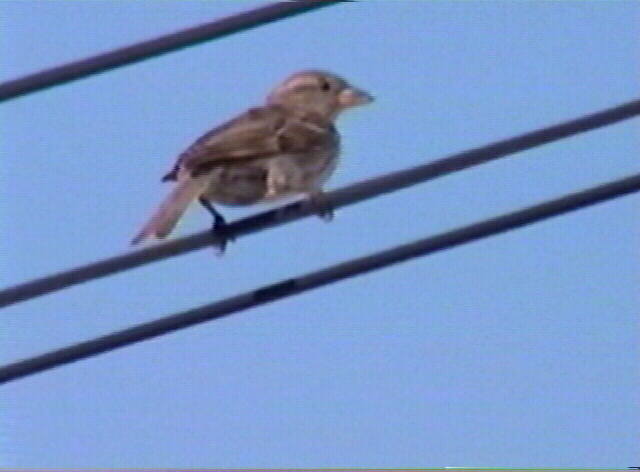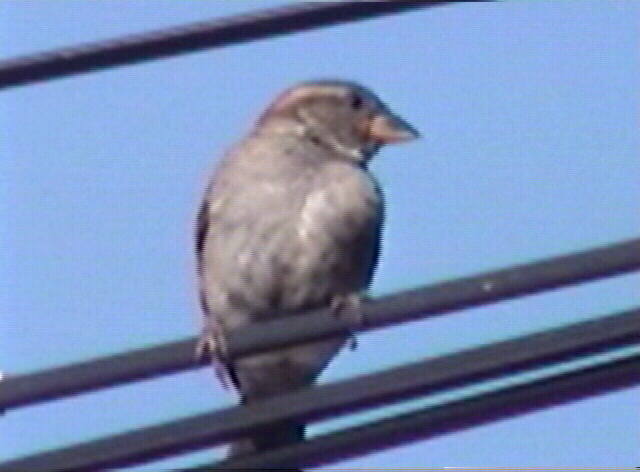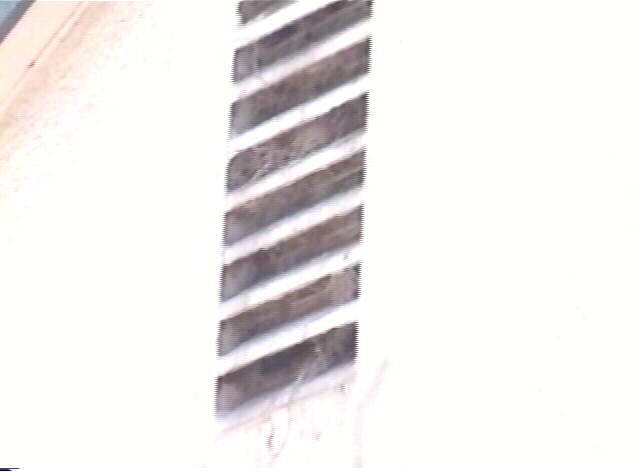|
|
|
The house sparrow (Passer
domesticus ) (aka: English sparrow, European sparrow), is not
really a sparrow
but a weaver finch. It has spread throughout the world, just about
everywhere people live. It is one of the species which does so
well in close
association with humans that it is often a pest.
 The house sparrow is perhaps the most commonly seen species
of birds.
House sparrows may forage singly
or in groups, sometimes large flocks. Foraging flocks sometimes
include house finches, escaped
parakeets, or other seed eating birds.
The house sparrow is perhaps the most commonly seen species
of birds.
House sparrows may forage singly
or in groups, sometimes large flocks. Foraging flocks sometimes
include house finches, escaped
parakeets, or other seed eating birds.
 The male house sparrow has the black bib and brown, white, and gray
markings on its head. House sparrows become become quite bold
when begging and scavenging in picnic areas.
The male house sparrow has the black bib and brown, white, and gray
markings on its head. House sparrows become become quite bold
when begging and scavenging in picnic areas.
 The female house sparrow is much duller and plainer in coloring than
the male.
The female house sparrow is much duller and plainer in coloring than
the male.
 House sparrows got their common name from their preference for nesting
site small openings in or around houses or other buildings. In
this instance they have constructed an avian apartment complex in this
attic
vent. Their tendency to plug vents, and the messy residue of
nesting
activity, are in large part responsible for their classification as
pests.
House sparrows got their common name from their preference for nesting
site small openings in or around houses or other buildings. In
this instance they have constructed an avian apartment complex in this
attic
vent. Their tendency to plug vents, and the messy residue of
nesting
activity, are in large part responsible for their classification as
pests.
[Taxonomy
: Classification]
[Birds] [ Back Yard Biology]
[ Science
Can Be Fun]